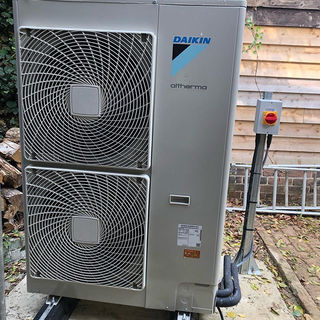
A Heat Pump uses refrigeration technology to extract heat from the air, soil or flowing water. By careful choice of the refrigerant gas, and design of the heat absorbing components, Heat Pumps will continue to extract heat down to outside temperatures below -15oC and some designs are capable of good performance well below this temperature.
Heat Pumps act as heat ‘multipliers’. They use a small amount of electricity to harvest outside heat and ‘concentrate’ it to a useful temperature; capable of running Radiators, Underfloor Heating and producing Hot Water.
Heat Pumps are at their most efficient when used to heat well insulated properties with generous sized radiators or underfloor heating. For retrofit situations, some adjustment of radiator sizes may be necessary. However many properties that have had loft and cavity wall insulation, double glazing and other energy efficiency measures installed since their heating system was first fitted, may need little or no change.
There are two types primary of Heat Pumps;
Air Source and Ground Source.
Air Source Heat Pumps use a slow running fan to draw outside air through the unit and the heat is extracted from it, chilling the air that passes through it. As the refrigerant gas that transfers the heat has a boiling point of around -30oC the Heat Pumps will continue to work at low temperatures.
Ground Source Heat Pumps rely on buried or submerged pipework to extract heat from the ground or from water. Ground collectors are either horizontal or borehole types:- Horizontal collectors require a field or possibly a very large garden for them to collect sufficient heat. Boreholes are more suitable for smaller land areas, but are somewhat more expensive to have installed. Heat Pumps are available in range of capacities; units suitable for small domestic dwellings to schools and other large buildings such as offices, nursing homes and GP surgeries.












